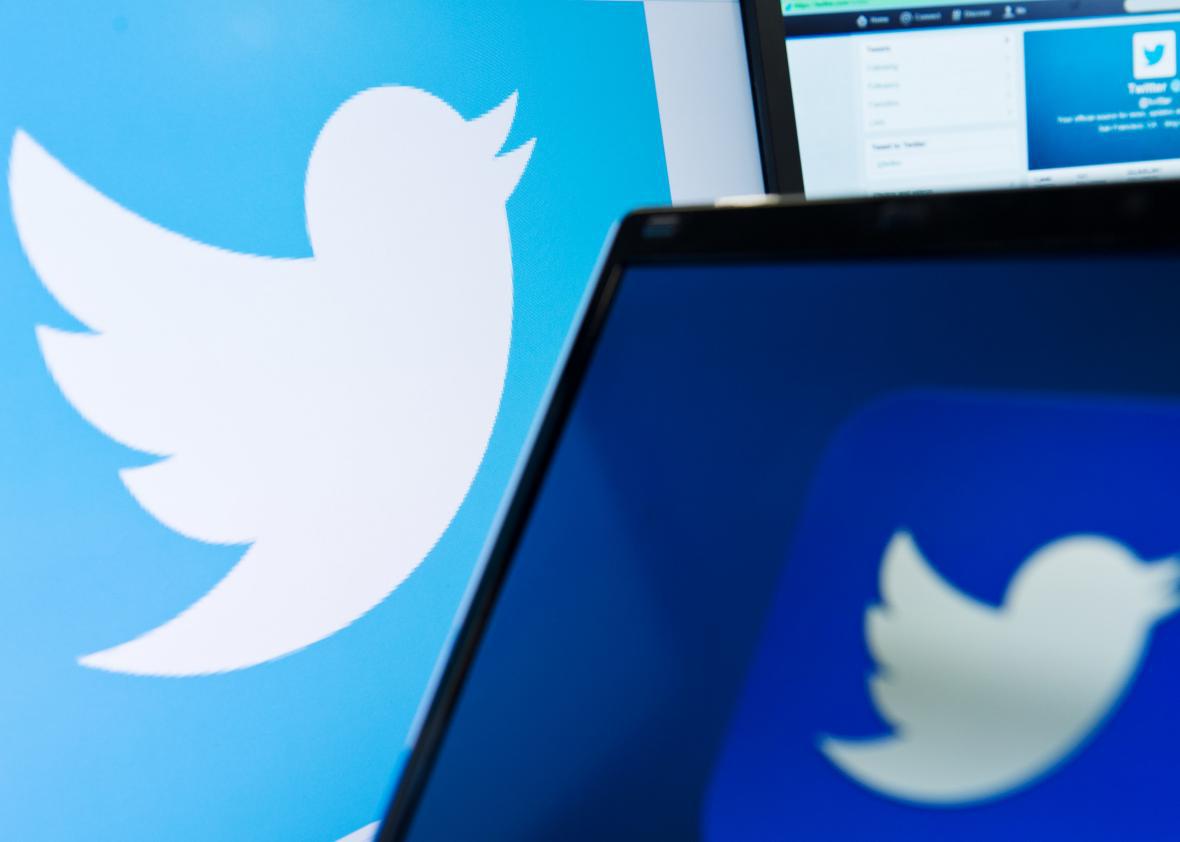
Leon Neal/AFP/Getty Images
Twitter changed one of its oldest features on Thursday: the “at-reply” or “@reply,” which is now just a reply.
With the change, the text of a reply will no longer begin with the Twitter usernames of the people it’s replying to, and those handles will no longer count against the 140-character limit. Instead, the names of the other users involved in a conversation will appear in blue, small-type metadata above the reply itself.
If that sounds confusing, it really isn’t. What’s confusing is the way replies used to work. The at-reply was a hack that users came up with early in Twitter’s history because the service lacked a built-in reply feature. Twitter soon adopted and formalized the convention, and co-founder Ev Williams explained its intricacies in a 2008 blog post. Even back then, he recognized that the system remained confusing, and pledged to keep working toward a cleaner implementation.
Nine years and three CEOs later, replies on Twitter finally work roughly the way you might expect replies to work on a modern social networking service.
That, of course, has not stopped its notoriously change-averse core users from freaking out, as they are wont to do whenever Twitter takes even the most timid step away from its original user interface.
Here’s a sampling of the reaction:
The Atlantic’s Robinson Meyer, a longtime Twitter critic, seemed to buck the backlash with a tweet declaring Twitter’s user base “the only group of people more intransigent and preening than the Freedom caucus.” Within minutes, he deleted the tweet and posted an amended one clarifying that he, too, hated the latest change.
It’s well-established that Twitter power-users hate change. It’s equally well-established, among those who follow the ever-struggling company closely, that it must evolve in order to survive. A new format for replies isn’t going to singlehandedly save Twitter, of course. (Deeper problems include harassment and the struggles of its advertising business.) But modernizing and simplifying its interface is essential to make the service more intuitive to new users, who tend to find the network confusing and overwhelming.
Under the old system, conversations among more than two users—sometimes called “Twitter canoes”—were almost impossible, because the characters required to spell the usernames of those involved left little room for the substance of the reply itself. It also meant that you couldn’t begin an original (nonreply) tweet by mentioning another Twitter user unless you prepended a period or some other character, because the system would treat that as an at-reply. (That’s still true, for the time being, although the new reply format opens the door for Twitter to change it.)
There are downsides to just about any change, of course. In this case, you could argue that the old constraints on replies served to discourage users from tagging others en masse, a practice that can be irksome because it clogs people’s notifications and includes them in conversations without their consent. (Gizmodo’s William Turton was quick to demonstrate this capability and to use it as evidence that “Twitter just ruined Twitter.”) Some have also complained that removing the text of usernames from replies diminishes their context.
It’s true that easing constraints on how people use Twitter opens new ways to annoy people. It’s also trivial. Those who want to behave rudely, or worse, on Twitter, will always have plenty of avenues available to them; it’s not as though keeping the user interface frozen in 2011 has made the service a bastion of cordiality.
And while the 140-character limit has proven potent in many ways, Twitter and its most active users tend to fetishize that limit at the expense of the sort of innovations that would be needed for the service to gain broader appeal. Over the past year, the company has been gradually loosening some of the arbitrary restrictions that shorten the text of tweets even further, such as counting links to photos and gifs against the limit. But it’s doing so at an excruciating pace. A more nimble social-media company, such as rivals Snapchat and Facebook, would have made these changes years ago, weathered the inevitable backlash, and moved on.
A sensible next step for Twitter would be to stop counting the URLs of links against the character limit. That particular obstruction has incentivized users to screenshot and comment on articles without linking to them, a practice that’s both unfair to publishers and conducive to the spread of hoaxes and misrepresentation.
Ultimately, Twitter should find a way to allow tweets longer than 140 characters, something I thought it was on the verge of doing more than a year ago. (For example, an “expand tweet” option would preserve 140 characters as the default length, while giving users the option to publish and view longer notes if they choose.) There would be downsides to that, too—but at this point, the downsides of stagnation are existential for the company. Already its struggles have made it the subject of acquisition talk, with suitors ranging from Salesforce to Disney. Its user data is extremely valuable, but if it can’t find fresh ways to draw in users and revenue, it will be hard-pressed to remain solvent and independent much longer.
In a way, it’s flattering to Twitter that its hardcore users appreciate so deeply the value of its founding concept, which established 140 characters of text as a new and distinct mode of online communication. Yet there’s a sad irony in the cry of “R.I.P. Twitter” that arises every time the company tweaks some aspect of its original interface. Blue lines didn’t kill Twitter. The algorithmic timeline didn’t kill Twitter. And the new format for replies isn’t going to kill Twitter. If anything could prove a death sentence, it’s the notion that the service can’t evolve without ruining itself.